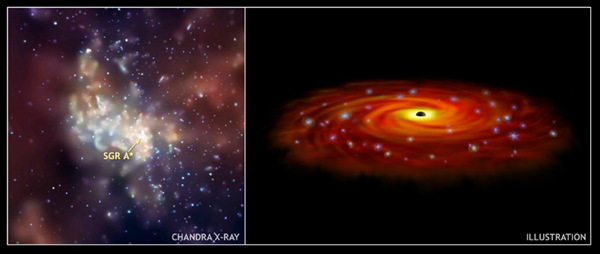Sagittarius A*: The central region of the Milky Way Galaxy, including the supermassive black hole, Sagittarius A*.
Caption: Chandra's image (left) has provided evidence for a new and unexpected way for stars to form. A combination of infrared and X-ray observations indicates that a surplus of massive stars has formed from a large disk of gas around Sagittarius A* (illustration on right). According to the standard model for star formation, gas clouds from which stars form should have been ripped apart by tidal forces from the supermassive black hole. Evidently, the gravity of a dense disk of gas around Sagittarius A* offsets the tidal forces and allows stars to form. The tug-of-war between the black hole's tidal forces and the gravity of the disk has also favored the formation of a much higher proportion of massive stars than normal.
Scale: Left panel is 5.6 arcmin across
Chandra X-ray Observatory ACIS Image
|


